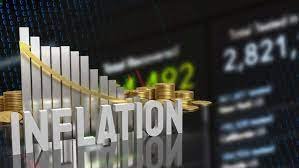Introduction
As 2025 unfolds, global economic landscapes are set to face numerous challenges and opportunities. From inflation trends to geopolitical shifts, understanding these trends is essential for businesses, policymakers, and investors to stay ahead in a rapidly changing world.
1. The Impact of Inflation and Interest Rate Changes
Inflation continues to be a significant concern for economies worldwide. In 2025, central banks will likely adopt varying strategies to combat inflation:
- Interest Rate Hikes: Major economies like the U.S. and Europe may maintain higher interest rates to curb inflation.
- Emerging Market Vulnerabilities: Countries with weaker currencies might face challenges due to rising borrowing costs.
"Central banks globally are walking a tightrope between controlling inflation and sustaining economic growth."
2. Emerging Markets and Their Growth Potential
Emerging markets are expected to drive global economic growth, thanks to rapid urbanization, technology adoption, and favorable demographics:
- India and Southeast Asia: Economies in this region are poised for robust growth due to digital transformation and strong consumer demand.
- Africa’s Potential: Investments in infrastructure and renewable energy are unlocking new growth opportunities in Africa.
3. Climate Policies and Their Influence on Global Economies
With the world intensifying its focus on combating climate change, climate policies are shaping economic strategies across the globe:
- Green Investments: Governments and businesses are prioritizing investments in renewable energy and sustainable projects.
- Carbon Markets: The expansion of carbon trading systems is incentivizing industries to adopt cleaner practices.
- Supply Chain Shifts: Stricter climate regulations are prompting companies to re-evaluate their global supply chains.
Future Outlook
The economic landscape in 2025 will demand adaptability and resilience. Navigating inflationary pressures, capitalizing on emerging markets, and aligning with climate policies will be critical for sustained growth.
Conclusion
Staying informed about these global trends can empower businesses, policymakers, and investors to make strategic decisions. As the world grapples with economic uncertainties, preparation and agility will be key to thriving in 2025.



